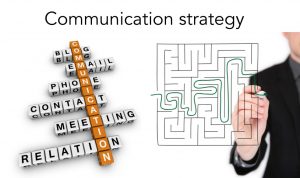
In the month of March, the Aubia Communications Blog will focus on storytelling as part of a business’ communications strategy. First, I explain what storytelling is and isn’t in this post, followed by how to structure a business story, and finally I have some fun looking at some of my favorite iconic storytellers.
Once upon a time … In a land far far away … There was once an … Is this what comes to mind when you hear the word “storytelling”? You think it’s just a bunch of kooky saps sitting around a fire yearning for the good ole’ days? A parent reading some out-of-touch fairytale to a child at bedtime? No way that dribble could fit into any real business’ communications strategy, right? Grandpa Joe reliving his boxing glory days may be ok for the family reunion, but that’s just too touchy-feely to be taken seriously within a professional setting, you know?
You may be surprised then to learn that in a recent survey of professional speakers, more than a third of the respondents wanted training in how to tell stories to better connect with their audiences. CEOs are now sharing personal stories more than ever during speaking engagements with employees, shareholders and media. Job candidates are encouraged to respond to interview questions with stories enveloping their abilities. Storytelling in business has come a long way, and it’s only getting stronger.
Why does storytelling in business work?
First, it’s a matter of basic psychology. Our minds are programmed to learn, relate and live in stories. Leading narrative consultant Thaler Pekar has said “facts fly by but stories stick,” and renowned story strategist Andy Goodman believes stories emotionally connect people to one another, other entities and ideas. When facts are presented wrapped up in a story, a wide majority can recall the information better than if just facts and figures were presented, much like many of us do in the infamous “death by PowerPoint” business presentations. Also, our brains operate in one of two realms and it is physically impossible for them to do this simultaneously. We are either in our analytical or emotional mindset at any given time. When our brains are set to the analytical side, triggered by facts, we look for challenges and resistance. When we’re in the emotional terrain, stimulated by stories, we are more open and responsive.
Second, though man has always told stories since cavemen drew on stone walls, today’s society is moving away from informational reasoning toward meaningful experiences. As future studies professors Sirkka Heinonen and Juho Ruotsalainen hypothesize, with the advent of social media and other new technologies, people are thirsty for authentic and personal interactions. Storytelling quenches that thirst through sharing vulnerability. Watch how Dr. Brené Brown uses storytelling to share her research on this very topic during a TED talk.
How to use storytelling in business
Understanding how stories persuade customers and encourage employees makes for better business opportunities. Using storytelling in business can be as creative and varied as you like.
1. Use your “About” page to share your business’ story
Would you rather read some dry facts and figures about what a business does or would you rather be drawn into a story about how that business came to be, how it struggled to finds its place, and how it is thriving today? As a key piece of owned media, your business’ “About” page is the top spot online to draw in and connect with current and potential clients. After taking a class on storytelling last summer for my master’s degree studies, I changed my “About” page to share my journey into public relations.
2. Teach through story
Think about the last time you attended a really interesting training session. Did the presenter flash PowerPoint slides all day with instructions? Or did he get down in the trenches with you and tell you how he operates? Did he share how he best learned the trade? I’m willing to bet it was the latter. When you’re teaching employees or clients how to use your product, share how you’ve benefited from the use of that product, how you’ve best approached the situation. I can read a step-by-step recipe and make chicken parmigiana, but hearing a cooking show host’s story about how the first time she ever made spaghetti all the noodles stuck together because she forgot to add the olive oil, I’m now going to always remember the extra ingredient for perfect pasta.
3. Make your customers the story
People like to be appreciated. Organizations that find a way to connect with their consumers, have them take ownership, do better business. Featuring the stories of your customers, what drives them to use your product, endures them to your brand and builds trust with other potential customers. When Domino’s shared negative customer feedback in a risky ad campaign, they turned their customer’s complaints into the encouragement the company needed to make better quality pizzas. Customers, thereby, became the powerful agents for change.
4. Lead with story
Excellent leaders inspire. Through their vision and passion, they can create a genuine excitement in others. By opening themselves up, sharing stories of success and failure, struggle and victory, they become trustworthy. Storytelling in business then becomes a means of motivation for employees and consumers. When Steve Jobs gave the 2005 Stanford commencement address, he used his personal story to encouraged the graduates to pursue innovation through more than just education, compelling the exact qualities found in target Apple users.
What does storytelling in business mean to you?
Storytelling in business is much more than just an activity at a employee retreat. How are you using stories to inspire and connect with employees and consumers?



